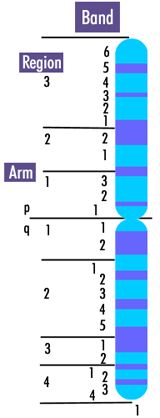Characteristics of Cancer
Causes of cancer Cancer is caused by both internal (genetic) and external (environmental) sources. Environmental sources: The environment in which we live plays an important role in the development of cancer. Environmental causes of cancer include a variety of chemicals, oncogenic viruses, and high-energy radiation. A carcinogen works in a series of stages to produce cancer. A "complete" carcinogen is one which affects tumor cells in all stages of development; an incomplete carcinogen in one which may not have the ability to initiate a tumor but which acts to accelerate its growth. Carcinogenesis occurs in four stages: initiation. promotion, progression, and malignant conversion. The process of carcinogenesis Initiation involves the interaction of the carcinogen with DNA, producing either a strand break or adduct. An adduct is an altered nucleotide which,. if not repaired before replication, may cause an incorrect base to be incorporated into the genome of the next generation of cells. Most of the time, this will not have an adverse effect on the cell. Sometimes, however, the error may be such that under certain circumstances the altered -- or initiated -- cell will have a selective growth advantage. Under these special circumstances, promotion may occur. One such special circumstance is the exposure to a special class of incomplete carcinogens known as promoters. These are compounds which selectively enhance the growth of initiated cells. The cells may proliferate, forming benign tumors or lesions. This stage is reversible, and the disappearance of the promoter results in the disappearance of the proliferated cells. The multiplying cells can undergo a genetic event that confers a permanent genetic growth advantage. The stage is known as progression. This event can be due to additional exposure to a carcinogen, spontaneous mutation that occurs naturally, or instabilities introduced by the initiating mutation. This may eventually lead to malignant conversion. A complete carcinogen is one which is capable of performing all four stages. Incomplete carcinogens are ones that current assays seem to indicate are nongenotoxic, but seem to increase tumor incidence. Examples of this include phenobarbitol, which cannot initiate mutagenesis but can enhance the growth of tumors in concert with small doses of other carcinogens. Adduct formation by the carcinogenic modification of DNA bases usually falls into one of three categories: alkylating agents, aralkylating agents, and arylhydroxylamines. These categories make up more than 95% of known carcinogens. Each type of each differs in the method by which it forms an adduct, and may either be intrinsically reactive with DNA or may be metabolized to an active form. Other forms of external sources of cancer include radiation, which, like a carcinogen, results in the modification of nucleotides to form an adduct. In addition, it is possible that certain viruses play a role in cancer development. These viruses include the hepatitis B virus (possibly associated with liver cancer) and the human papilloma virus (associated with cervical cancer). Viral genomic sequences have been found in these types of tumors, but it has yet to be proven that these viruses play a role in their development. Genetic causes: It has long been known that there are genetic factors involved in the development as cancer. As early as the first century, the Romans observed that breast cancer seemed to occur more frequently in some families than in others. More recently, understanding the molecular genetics of cancer has provided inspiration for early detection and treatment of the disease. There are three main causes of cancer. First is the missense mutation of genes. The missense mutations are single base changes that result in the substitution of one amino acid for another in the protein product of the gene. It also occurs by the nucleotide insertion or deletion into genes. As a result the codons, consisting of groups of 3 bases (subtracting or adding a base or bases), change the coding of all the codons that follow. For instance, look at these words - THE BIG HAT SAT. By inserting a letter 'Q' in the second word, after the meaning of the words can be changed to - "THE BQI GHA TSA T." The change in the "reading frame" in a gene will be a cause for coding a different sequence of nucleotides in its protein product. There are 50,000 to >100,000 genes in the human genome which posses about 3,000,000,000 base pairs. The second reason behind cancer is the different kind of genes: oncogenes, tumor suppressor genes, and DNA repair genes. Oncogenes encourage and support the normal growth and division of cell. Mutations in tumor suppressor genes resist the cell growth and division cycle. Tumor suppressor genes are located on any part of a cell such as at the cell surface, in the cytoplasm or nucleus, and so forth. For instance, the tumor suppressor genes RB codes the pRB protein, a nuclear protein that is a major break in the cell cycle; BRCA1 (located on chromosome # 17) and BRCA2 (located on chromosome # 13) contributed to over 90% of the cases of inherited breast and/or ovarian cancer. For ovarian cancer, the mutations of genes and chromosomes include the DNA gain of chromosome arms: 8q, 3q, 20q, 1p, 19q, 1q, and so on. By knowing the location at the chromosome arms, the different kind of cancer can be identified. Figure 1: Chromosome band
The other cause of cancer is an alteration in the structure and number of chromosomes, which occurs by deletion, duplication, translocation, or inversion of chromosomes. These chromosome breaks occur from spontaneous errors in replication and mutation in genes that normally repair breaks. Environmental agents such as radiation, viruses, or chemicals increase the mutation rate of genes. References: McKinnell, Robert, et. al. The Biological Basis of Cancer. Cambridge: Cambridge UP, 1998. |
